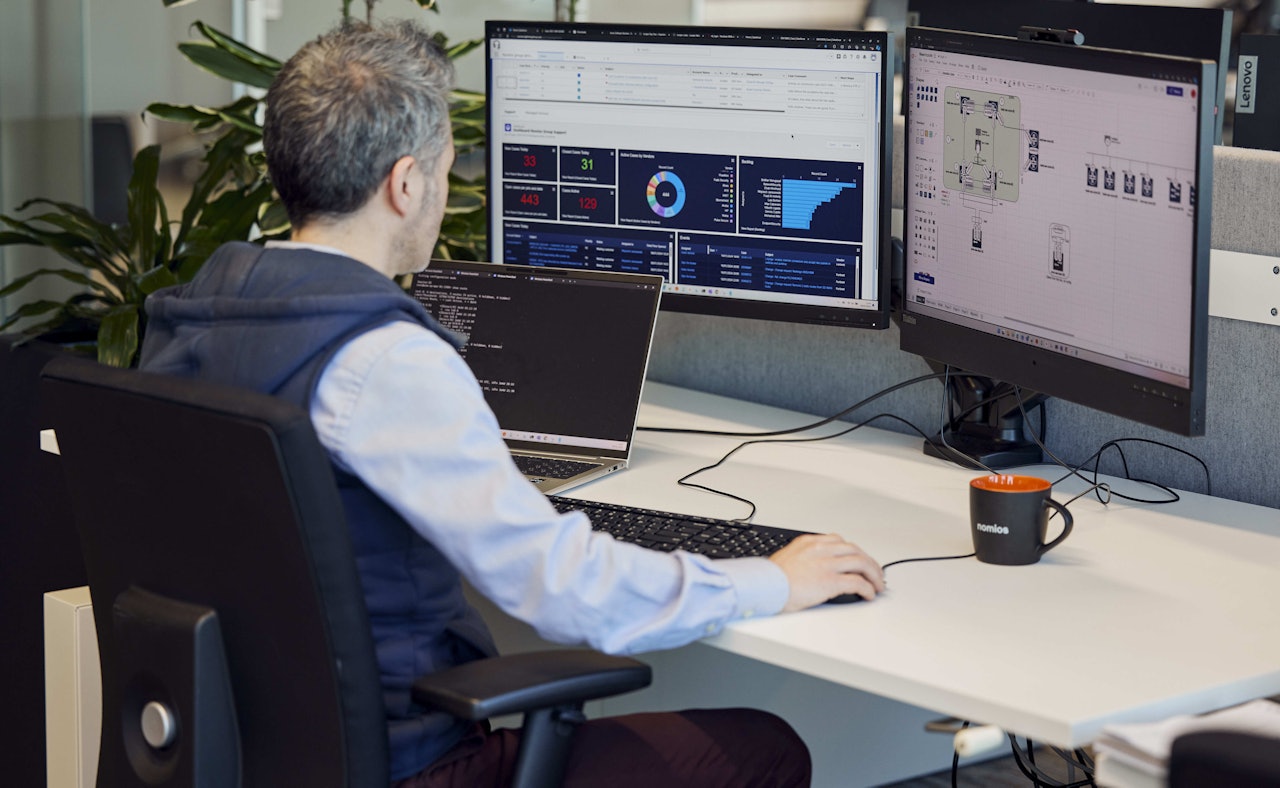Many organisations rely on security information and event management (better known as SIEM) to help detect and combat suspicious activity on their networks. Although SIEM technology is definitely valuable, the solution has certain limitations, especially when networks become bigger and more complex.
To build a complete and fully operational cybersecurity solution that can address and adequately deal with the growing stack of cyberthreats, you would be well-advised to delve into the opportunities that complementing security tools and strategies like NDR and EDR offer. In this article, we will take a closer look at SIEM, EDR and NDR and show you how the three solutions have the potential to effectively complement each other.
But first, we'll explain the three concepts shortly.
What is SIEM?
SIEM is the common denominator for software services that aggregate and analyse (suspicious) activity from many different sources across your digital infrastructure. The main role of SIEM? Collecting security data from applications, network devices, servers, domain controllers and databases. The application of analytics to that data enables you to detect threats, discover trends and investigate alerts and network vulnerabilities.
The SIEM process consists of the following steps:
- Collecting data from various sources.
- Normalising and aggregating the collected data.
- Analysing the data to discover threats.
- Identify security breaches and enable your cybersecurity experts to investigate alerts.
What is EDR?
EDR (Endpoint Detection and Response) is a term that applies to cybersecurity solutions that focus on the detection of malicious activities and software that is installed on endpoints (server, desktop, laptop). EDR solutions often use agents that are installed on such an endpoint to collect data from many different kinds of data sources directly on the endpoint. Subsequently, they store the information in a central database.
EDR tools complement SIEM solutions. A SIEM sees an EDR as a different, separate log source, which can provide valuable additional information to a SIEM.
What is NDR?
NDR (Network Detection and Response) is a solution that adds context to security threats. Features such as network traffic analysis and the real-time inspection of network communications allow NDR solutions to detect and investigate threats, anomalous behaviours and risky activity across all the corners of your network. NDR acts as a virtual forensic expert that has the capability to understand the exact scope and peculiarities of a security incident or breach.
NDR solutions harness the strengths and virtually unlimited capabilities of high-end AI, machine learning and deep learning to provide predictive risk analysis. When you are dealing with large amounts of poorly contextualised alarms, NDR is often a better fit than SIEM.
How SIEM, EDR and NDR complement each other
SIEM products can create thorough reports on incidents and events, including malware and other malicious activity. But they can’t self-adapt and often struggle to draw the right conclusions from massive data floods. Advanced NDR can quickly decode dozens of protocols in order to pinpoint attacks and suspicious behavioural patterns with enough context and evidence for analysts to take confident action.
NDR also complements EDR by closing EDR agent gaps. The combination of EDR and NDR enlarges and enforces your endpoint detection arsenal. The bottom line? SIEM, EDR and NDR all have their specific strengths and weaknesses. Combining the three allows each component to augment the others, maximising the strengths and minimising the weaknesses. SIEM is definitely not dead, but it can benefit greatly from the extra features that EDR and NDR bring to the table.
MDR brings it all together
Nomios' Managed Detection and Response (MDR) unites SIEM, EDR and NDR and therefore minimises the cyber risks that your organisation is exposed to. And you don’t have to hire and maintain a large and expensive team of cybersecurity specialists to comb through thousands of suspicious events per week to single out the relatively small number of real threats.
MDR provides you with the following features and benefits:
- Security experts who keep a close eye on your network by continuously observing events, log files and network traffic.
- Hundreds of detection rules that can spot suspicious activity within a matter of seconds.
- Advanced SIEM, NDR and EDR technologies, reinforced by machine learning and threat intelligence, allow security experts to take measures quickly and effectively.
- 17 years of experience in setting up and managing information security for organisations in various sectors.
- Experience shows that attackers often strike outside office hours and during the holiday period. That is why we analyse, detect and respond 24 hours a day, every day of the year, to protect your digital organisation.
- Personal data is protected in every system and process and in accordance with the GDPR.
Do you want to know more about this topic?
Our experts and sales teams are at your service. Leave your contact information and we will get back to you shortly.

Updates

SOC NOC
NOC vs SOC: The difference and why do you need both?
Discover the difference between an NOC and SOC, and why the collaboration between network management and cybersecurity is crucial for stable and secure IT environments.

Cybersecurity
Top cybersecurity companies to watch in 2025
We selected the top cybersecurity companies to watch in 2025, who have successfully differentiated themselves from other players in the market.

Mohamed El Haddouchi

Cybersecurity
The latest cybersecurity challenges
Explore the latest cybersecurity challenges, from AI-driven threats to quantum risks, impacting organisations in an evolving threat landscape.

Usman Khan


